You’re considering a trip to Iceland, an excellent choice.
For many, traveling to Iceland is a certified bucket-list experience. The land of Fire & Ice is one of the most naturally beautiful environments on the entire planet. The stunning lagoons, waterfalls, ice caves, and Northern Lights make Iceland almost an alien land stranded on Earth. But knowing what to do in Iceland and taking advantage of your time there can be a challenge.
The good news is – 2023 could be the best year ever to visit Iceland.
With tourism yet to reach the lofty 2 million annual visitors of 2018, this is the perfect opportunity to revel in the delights and delicacies of the land of Fire & Ice. Iceland is fully open for business and the economy has roared back into life following the pandemic. But foreign visitors are yet to reach pre-pandemic levels, so this gives you and your travel buddies a unique window of time to see Iceland at its finest and its quietest.
What’s in this guide:
1 – Book & research in advance
3 – Use credit cards with a pin
4 – Be prepared for unpredictable weather
5 – Pack layers and a waterproof layer
6 – Waterproof shoes and footwear
7 – Keep an eye on weather alerts and road closures
8 – Pick the right vehicle type (4WD or 4×4?)
12 – This is the etiquette for tipping
14 – Get a wifi hotspot or local sim package
15 – Learn some helpful phrases before you travel
18 – Pack European travel adaptors
19 – Manage your expectations with the Northern Lights
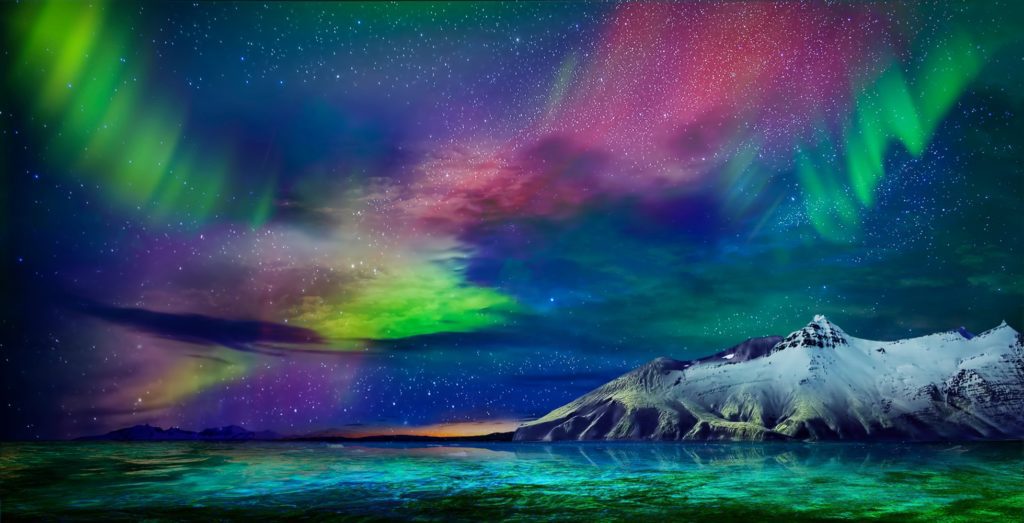
If you fail to plan, you’re planning to fail
Iceland is an incredibly beautiful country. It’s a desirable destination for millions around the world thanks to its raw environments and approachable culture. It can be tempting to ‘wing’ a trip to somewhere new and in some cases that might work.
But Iceland needs careful and considered planning. You’ll want to study these 19 tips to make the most of your time and budget:
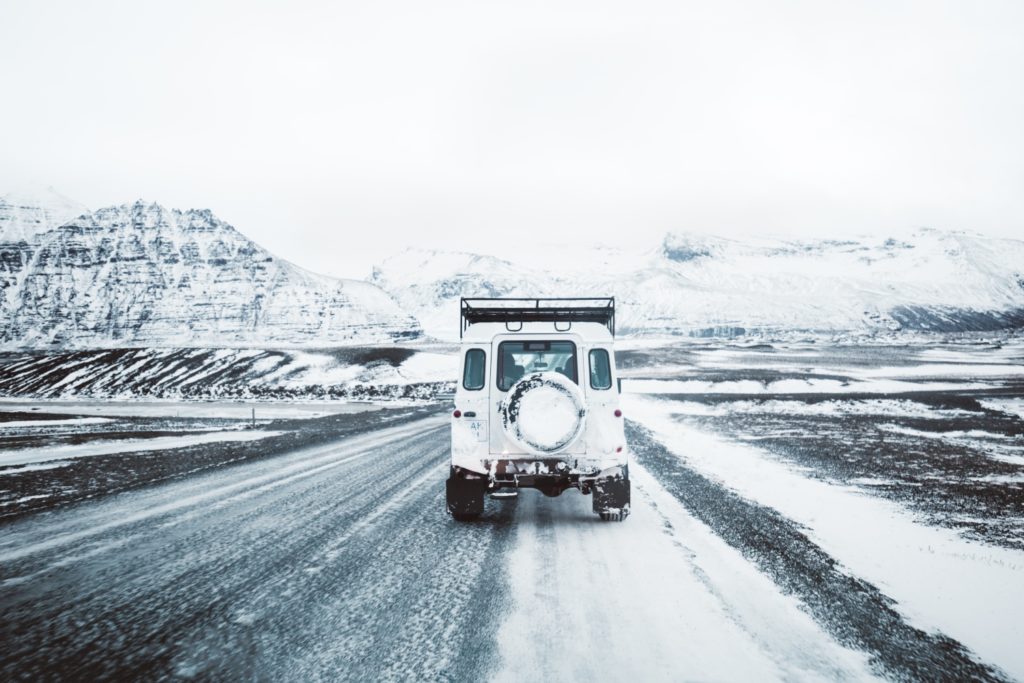
1. Book & research in advance
Booking ahead is essential for your Iceland trip. This goes for everything from flights, to accommodation, to excursions in Iceland and of course, the car hire. Flights to Iceland can be expensive, especially if you leave them until the last minute.
Kayak, the leading flight comparison service, recommends booking flights at least 5 weeks before departure to get a below-average price. High season is considered to be January, November, and December. The cheapest month to fly from the United States in January. Keflavik International Airport (KEF) is the only international gateway to Iceland and is situated at the southwestern tip of the island.
According to Kayak, Lufthansa is the highest-rated airline flying to Iceland, followed by Scandinavia Airlines, Icelandair, and British Airways.
What about visas?
- Flying from the US
US citizens booking flights from the US to Iceland do not require a visa in order to travel. US citizens can visit Iceland for 90 days within 180 days. US Green card holders will need to apply for a Schengen visa.
- Flying from the UK
UK passport holders do not need a visa to visit Iceland. UK passports must be valid for at least three months from the date of departure from Iceland. UK citizens can visit Iceland for 90 days within 180 days.
- Flying from EU
EU citizens do not need a visa to enter Iceland. But note, Iceland is not part of the EU but is part of the Schengen group. EU citizens can visit Iceland for 90 days within 180 days.
Get the car rental organized with a trusted team
Car rental is something we know a thing or two about. At Geysir, we’re one of Iceland’s most trusted car rental companies. The best and safest deals for car hire can’t be found upon arrival at the airport, in fact there may be none left at all (it does happen!).
At Geysir we pride ourselves on:
- A fleet of 1,000 cars from N.America, Europe, and Asia
- 24/7 hotline for emergencies
- 48hr cancellation notice, a full refund
- No hidden fees or additional taxes
- Secure online payments – only the bank sees your details
- On many of our vehicles, we offer an early bird discount for booking 30 days in advance
2. Don’t use cash
One of the questions we see banded around online is whether visitors need to bring cash to Iceland. The currency in Iceland is the Icelandic króna and whilst we recommend getting your head around the respective exchange rates from GBP, USD, and EU, there’s actually no need to prepare physical cash.
Nordic countries are famous for their cashless societies and there’s no amount too small that can’t be handled by a credit or debit card. Whilst you can use cash, it feels safer to lean into the advanced network of card payment touchpoints across Iceland. You’ll remove the risk of losing the cash and also save yourself a heavy spending spree at the end of the trip as you try to get rid of the last few króna!
Our top tip: As most frequent travelers will know, overseas card payments can be subject to an international banking charge or fall foul of a less-than-optimal exchange rate. We’d recommend either notifying your bank you’ll be heading overseas or exploring emerging bank offerings such as Revolut which offer international fee-free payments.

3. American travelers – use credit cards with a pin
Predominantly a tip for our US readers, we’d recommend getting signed up for a credit card that has a 4-digit pin. Whilst we’ve heard from the majority of US travelers that swipe & sign can be used in 90% of places in Iceland, you’ll struggle to pay for fuel using this method. The alternative is buying a prepaid fuel card but this feels like an extra hassle.
VISA and Mastercard are the providers with the most availability, whilst American Express has limited acceptance rates. As we said above, credit and debit cards are used all over Iceland for every payment – in restaurants, bars, supermarkets, and gas stations. If you bring one with a pin, you know you’ll never be caught without one!
Our tip for American travelers: Check out this list of the best credit cards for travel that come with a pin, keep an eye out for ones without a transaction fee!
4. Be prepared for unpredictable weather
Ah, the weather. Everyone’s favorite question before a big adventure. The best thing to say about Iceland’s weather is that uncertainty is the only certainty. Yes, January will be colder than July, the average temperature in Reykjavik in Jan is 0 celsius (31F) and in July, 13 celsius (55F). But overall, Iceland’s weather can swiftly and drastically change within the day.
Guide to Iceland produced a detailed breakdown of the year-round weather in Iceland. The top line is that you should prepare for every weather condition, no matter the time of year you’re traveling. In Iceland, you can wake up with glorious sunshine, be caught in an afternoon downpour, and then drive back in the evening with low visibility and mist. It really is that varied.
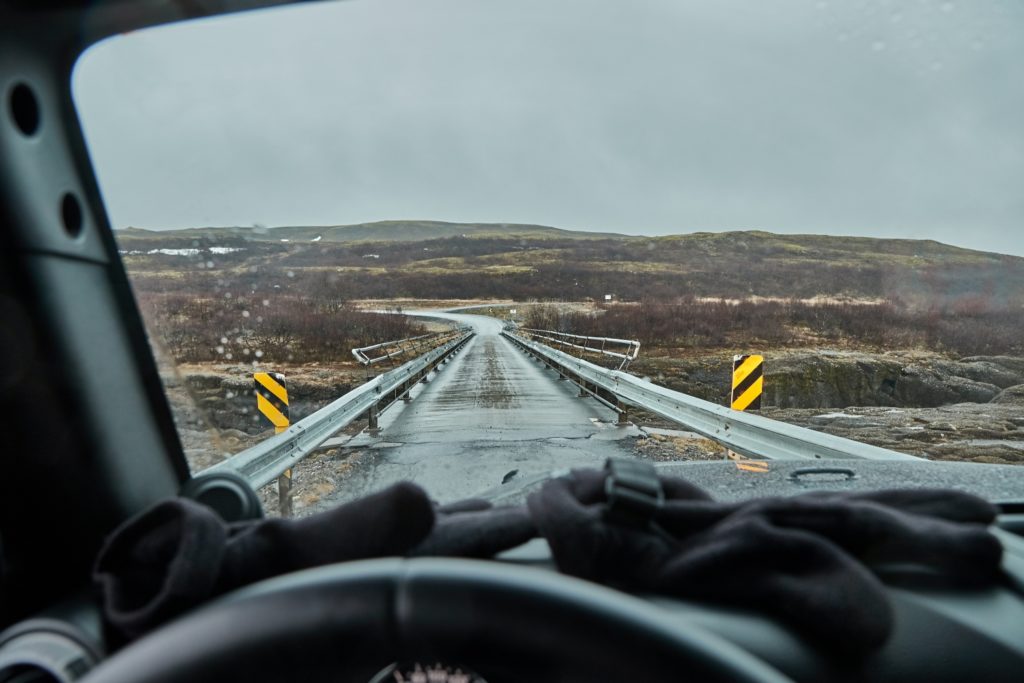
5. Pack layers and a waterproof jacket
If you’re planning on traveling to Iceland in the summer of 2023, don’t be misled by the slightly warmer temperatures. Iceland’s weather is ever-changing and at times, unforgiving. Having a reliable waterproof jacket to hand, all year round is an absolute essential for a trip to Iceland. You can’t predict when the heavens will open and a torrential downpour will unfurl.
Wearing multiple layers is also a great way to control your personal climate, you can layer up if it gets colder, or drop a layer or two if the temperature goes up. Alongside a waterproof jacket, a good pair of waterproof boots and waterproof trousers will keep you dry on a hike.
Our top tip: We’d recommend anything with Gore-Tex technology, both for upper body wear and for waterproof footwear. A range of brands produce an outdoor line with Gore-Tex technology, look out for the little logos. Gore-Tex specializes in waterproofing and breathability garments and is one of the most trusted outdoor brands. This isn’t an endorsement, we just rate them.
6. Waterproof shoes and footwear
There’s a real emphasis here on the ‘water-proof’, not just water resistant. From our experience, even in the summer months, water-resistant shoes just won’t cut it, you need something totally waterproof. Keeping your feet warm and dry is an important part of walking in Iceland. Overall, prioritizing comfort and quality over style and season is important.
Our top tip: For winter months, we recommend waterproof, warm, and with an emphasis on good grip. For summer months, you should look at waterproofing, with a lighter lining. Fully waterproof trail shoes such as Solomon are a good option for summer, they offer the weatherproofing of a boot and the nimbleness of a sneaker.
7. Keep an eye on weather alerts and road closures
At Geysir, we’ve been supplying Iceland with its motoring needs since 1973. We know a few things about the roads and the road system. The best thing about renting a vehicle with us is our deep understanding of Iceland and our 24/7 round-the-clock support.
Understanding road closures and weather alerts across the country will be vital when planning road trips and excursions. When planning a trip to Iceland we highly recommend planning your trip in advance and checking out the road conditions before you set off. Up-to-date information about road conditions can be found on www.road.is.
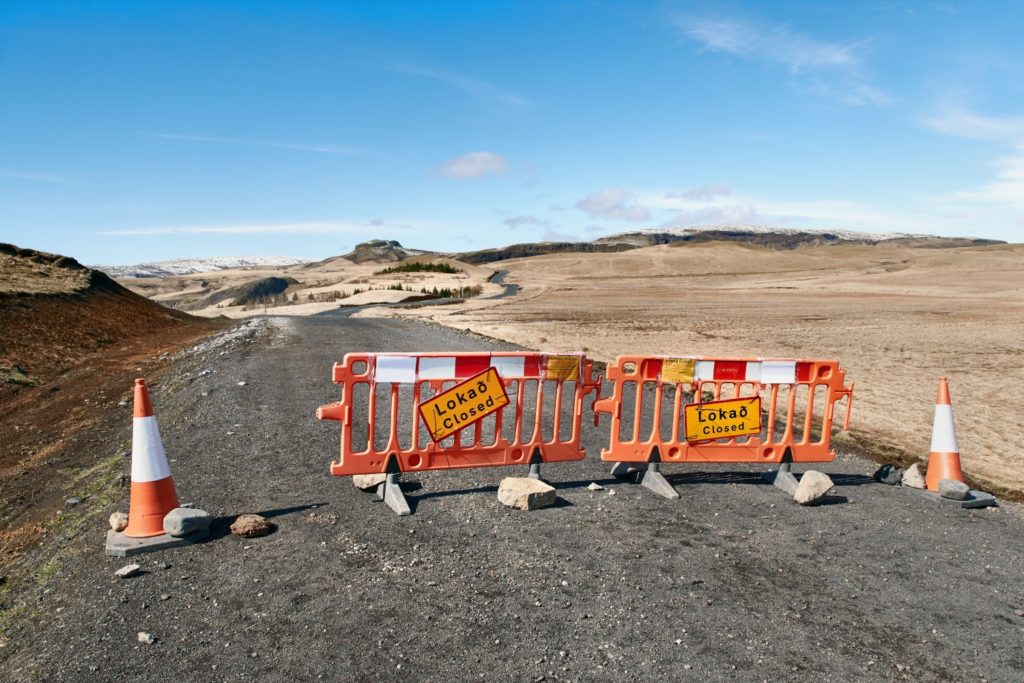
8. Pick the right vehicle type
At Geysir, we have a fleet of over 1000 vehicles for our customers to choose from. We supply cars from N. America, Europe, and Asia and have a vehicle for every terrain that Iceland has to offer. The type of car you choose, depends on the number of guests, whether you’re doing day trips or longer, and the terrain you’ll be tackling. Here are the main vehicle types we offer:
- City cars
- E.g. Hyundai Compact Class, Renault Megane Estate, Renault Megane etc.
We recommend our selection of city cars for city drives and shorter trips on all paved roads with two or three passengers and little luggage
- E.g. Hyundai Compact Class, Renault Megane Estate, Renault Megane etc.
- 4×4 cars
- E.g. Suzuki Vitara 4×4, and Suzuki Jimny New Model 2019. We recommend our 4×4 range of vehicles for cross-country drives with the family. Our 4x4s vary in size, so depending on your family size and the amount of luggage, you’ll need to take a closer look at the full range.
- Luxury cars
- We recommend the luxury fleet for those who are spending extended time in their vehicles and are seeking that extra level of comfort and quality. Our 4×4 luxury range offers unbeatable comfort blended with excellent driving capability for a variety of road and journey types.
- Passenger vans
- We recommend our passenger vans for large groups taking long highway trips. The driver requires a specific driver’s license for passenger van driving.
- Motorhomes and campervans
- You know what you’re getting with motorhomes. Convenience and comfort on wheels make extended road trips a dream. View our full range to find one suitable for you and your family.
Geysir is also leading the way by offering a range of environmentally friendly hybrid and electric car selections, read more to find out if you want to drive electric:
Read more:
> Driving an Electric Car in Iceland
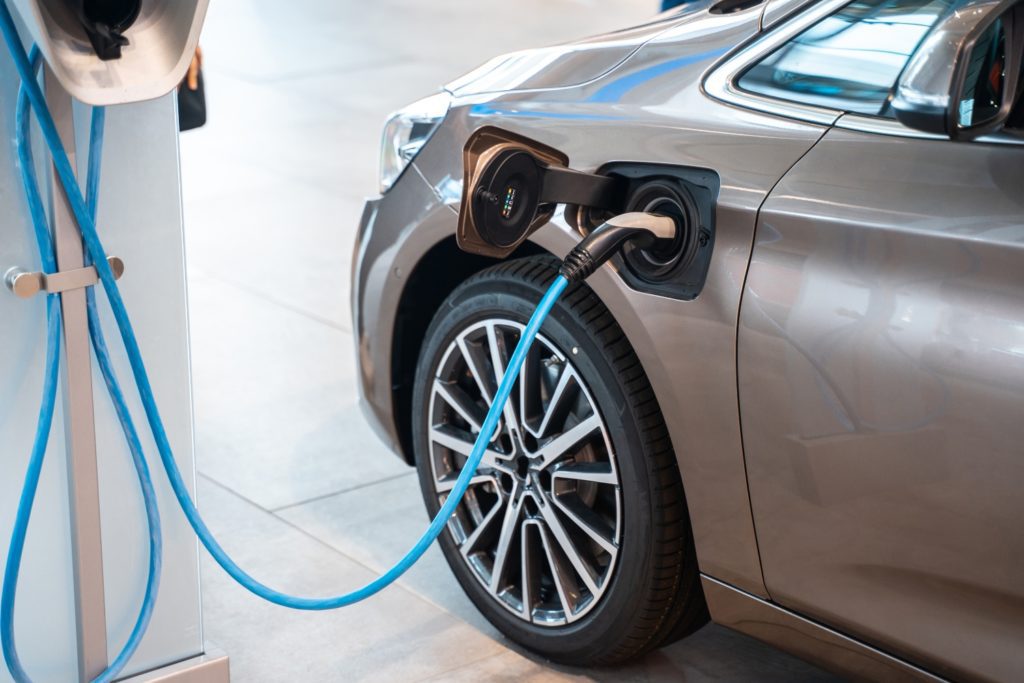
9. Plan a road trip (Ring Road vs F-Roads)
At Geysir, our team would be happy to sit down with you and discuss road trips and the best routes in Iceland. You’ll probably have heard about the ring roads and the F-roads, two of the most well-known road types in Iceland.
The total length of the ring road (R1) is roughly 1,332km and is mostly paved and easy to drive on but in parts, it can be narrow and requires driving concentration. The mountain roads (F-roads) are closed during the winter and are often impassable well into summer. Conditions can vary and change quickly on F-Roads if there is snow, ice, or heavy rain. These conditions result in deep potholes and rocks lying in the road, so great awareness is required from the driver.
These different road types should be taken into consideration when route planning, it will inform the vehicle type and who decides to take the wheel!
Read more:
> Driving Iceland’s Golden Circle in a Rental Car
> The Best Road Trip in Iceland
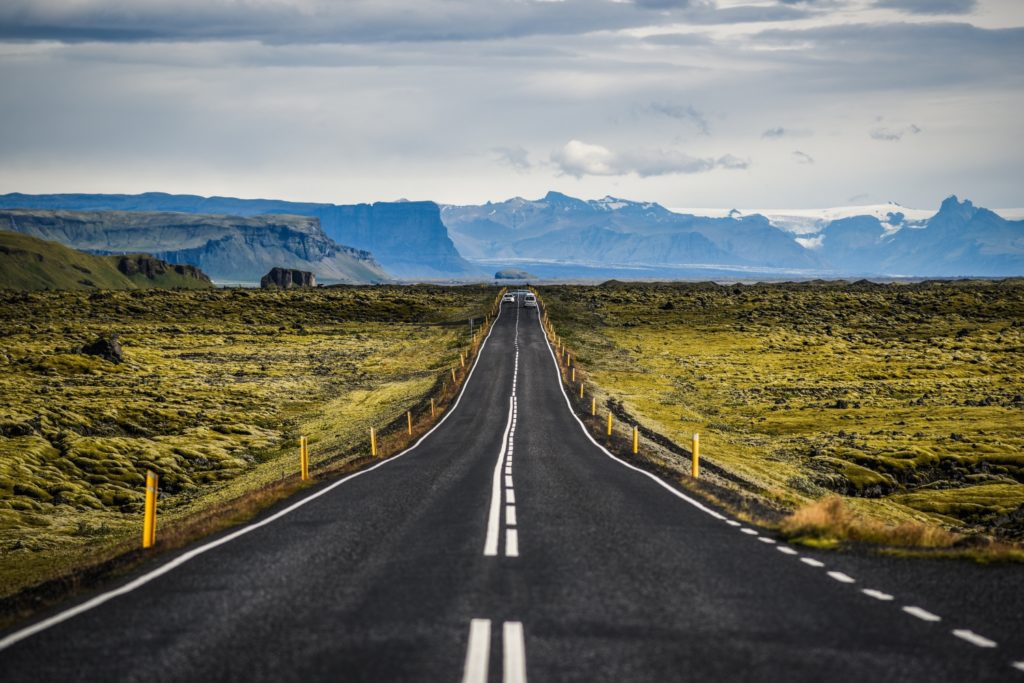
10. Drive carefully – driving tips
For some visitors from the UK, EU, and the US, driving in Iceland will be the first time they’ve driven in extreme weather conditions. With the weather being so unpredictable in Iceland, it doesn’t matter which time of year you arrive, there’s a high chance you’ll be thrust into conditions that are challenging to drive in.
These are our must-haves for driving safely in Iceland:
- Wearing seatbelts (front and rear seats) is required by law.
- Headlights must be ON at all times while driving.
- Off-road driving is ILLEGAL. Heavy fines are issued if caught.
- ONLY 4×4 vehicles are allowed on F-roads.
- Keep within the speed limit. Speeding fines are horrendously expensive!
- Keep a hold of the car door when opening in heavy wind.
- Check the filler cap to see what type of fuel you should put into the car.
- It is dangerous to stop the car on the side of the road.
- Your mobile phone is not a reliable GPS navigation system in Iceland.
- Be aware that animals (sheep, horses, and reindeer) may be on the road in rural areas.
- If you get a parking ticket, pay for it as soon as possible at any bank.
Read more:
> Driving in Iceland (driving tips and regulations)
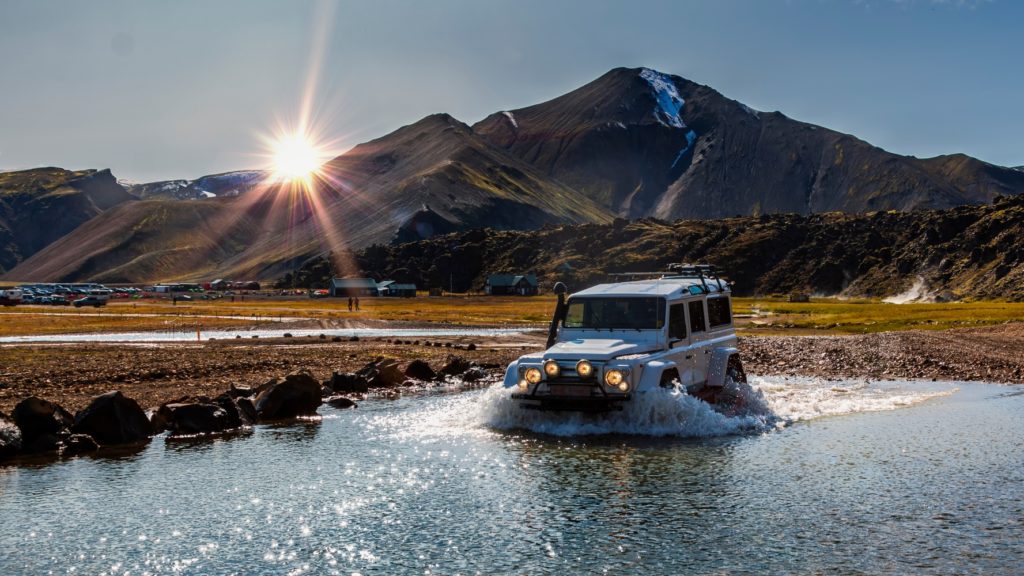
11. Budget ahead of the trip
Iceland is an expensive country but by budgeting ahead of time, you’ll have an understanding of where the pinch points are. Iceland is comparable to the other Nordic countries or to Switzerland in terms of value for money. The most expensive things, day-to-day, will be accommodation, dining out, and organized excursions – that’s why renting a car is such a brilliant idea because you plan your own road trips!
Our top tip: If you’re looking for overall budgeting tips and tricks, it can be a good idea to follow travel bloggers across social platforms. Iceland has a host of travel bloggers who are always on the lookout for ways of making the budget go further.
Our bonus tip: Also, Google themselves do a travel expenses template on Google sheets which is worth checking out here!
12. This is the etiquette for tipping
There are some varying cultural approaches to tipping across the EU, US, and UK. In the US, it’s expected that diners tip after a meal or drink, in the UK it’s not expected but it is encouraged.
In Iceland, tipping isn’t expected and with dining prices already high, you’ll want to think twice before tipping. In Iceland, it’s customary for the restaurant or bar to factor the service charge into the final bill, so the waiting staff is still being made whole for their efforts.
13. Get off the beaten track
Iceland has become a popular destination. Tourism reached a lofty 2 million in 2018, so people are beginning to catch onto the sheer raw beauty that Iceland has to offer. Reykjavik, the Blue Lagoon, and the Myvatn area, although must-sees for a travel itinerary, do get really crowded throughout the year – especially in the summer months.
Whilst we always advise caution when driving off the beaten track, in other words, stick to the main roads – we think there are some incredible places in Iceland where you can hike on foot and have not yet been overrun by tourists. Some of our favorites:
- Hvitserkur
- Haifoss Waterfall
- Dynjandi Waterfall
- Raudasandur Beach
- Trollaskagi Peninsula
- Siglufjordur
- Westman Islands
- Reykjanes Peninsula
Read more:
>Things to do on the South Coast of Iceland
>The best places to spot puffins in Iceland
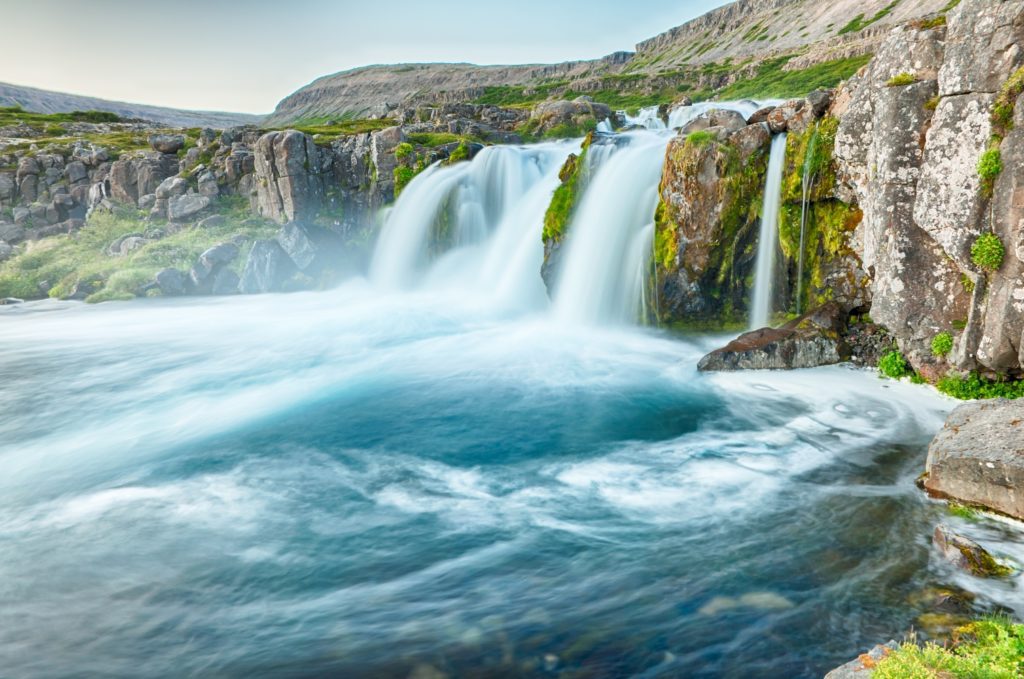
14. Get a wifi hotspot or local sim package
This is an important one for anyone who needs to check the odd email or just for staying in touch with family and friends back home. Most hotels and Airbnbs will offer good wifi speeds, Iceland is one of the leading countries for fiber optic deployment Today, 1Gbit/s speeds are available to 90% of citizens through full-fiber networks.
But whilst you’re out and about hiking or using a campervan, you’ll need either a wifi hotspot or a local sim package to port into the mobile 4G & 5G network in Iceland. There are two ways of doing this:
1) Agree with your UK, US, or EU provider that you’ll be overseas in Iceland and purchase a data package from them, alongside a wifi hotspot dongle.
2) Pickup a local data package sim when you land in Iceland (swapping it out for your existing sim) and you can enjoy Iceland’s 4G & 5G network and a temporary Icelandic number.
15. Learn some helpful phrases before you travel

English speakers breathe a sigh of relief, you don’t need to learn a new language before traveling to Iceland. The majority of people in Iceland speak English extremely well and the subtle accent means many of them sound convincingly English!
However, it might be useful to get a few basic phrases mastered before heading out there, it’s just a sign of respect to have made the effort. It will go a long way with the locals and it will also help you pronounce and understand the names of the places on your travel itinerary.
An overall note when learning Icelandic phrases, the long and complex-sounding words are actually just a combination of the shorter words – Germans will know this structure well!
Here are some basic phrases to get your head (and tongue) around:
1. Hæ/ Halló Pronounced: Hi/ Hah-low
What does it mean? Hello and used in generic greetings
2. Já/ Nei Pronounced: y-ow / ney
What does it mean? The first means yes, the second means no.
3. Góðan daginn Pronounced: go-thah-n die-in
What does it mean? Good day, the most common greeting in the Icelandic language.
4. Ég heiti. Pronounced: ye-gh hey-tee
What does it mean? My name is. Introducing yourself is good manners everywhere!
5. Hvar er Pronounced: kva-<r> e<r>…
What does it mean? Where is…
6. Klósett Pronounced: k-low-seht
What does it mean? Bathroom, or toilet.
7. Hversu mikið kostar þetta?Pronounced: kve<r>-su mih-kith coh-stah-<r> theh-tah
What does it mean? How much does this cost?
8. Kvitunn Pronounced: kv-ih-tuhn
What does it mean? Receipt. (you can use it to ask for one!)
9. Þakka þér/Takk Pronounced: thah-kah th-yeh-<r> / tah-k
What does it mean? Both mean ‘thank you’ but the first is more formal.
10. Afsakið/ Fyrirgefðu Pronounced: af-sah-kith / fih-<r>-ih-<r>-gef-thu
What does it mean? The first means sorry but also excuse me, and the second is a formal apology.
11. Verði þér góður Pronounced: veh-<r>-thu th-yeh-<r> go-thu<r>
What does it mean? You’re welcome (manners are very important in Iceland!)
12. Bless Pronounced: bleh-s
What does it mean? This means ‘goodbye’ or simply ‘bye’. Locals will repeat this twice.
16. Get to know the locals
The climate might be chilly but there’s nothing frosty about the locals. Despite Iceland being an unforgiving and challenging natural environment, Icelanders are generally warm, friendly and treat strangers and tourists very kindly.
According to the World Economic Forum, Iceland is both the most peaceful country in the world and the most friendly to visit – this is down to the people, so make the most of it! Whether you are traveling alone, with friends, or with family, make the effort to say hello (using your newly learned phrases) and get to know the local people. Giving directions in Iceland is an official sport, so with friends comes a better understanding of the local area and the must-see spots that you don’t find in the guidebooks.
Our top tip: Speaking of, on your trip, it may also be worth experiencing a traditional Icelandic cabin as one of your overnight stays. Icelanders love visiting these away from the hustle and bustle of urban life and you’re bound to make friends!
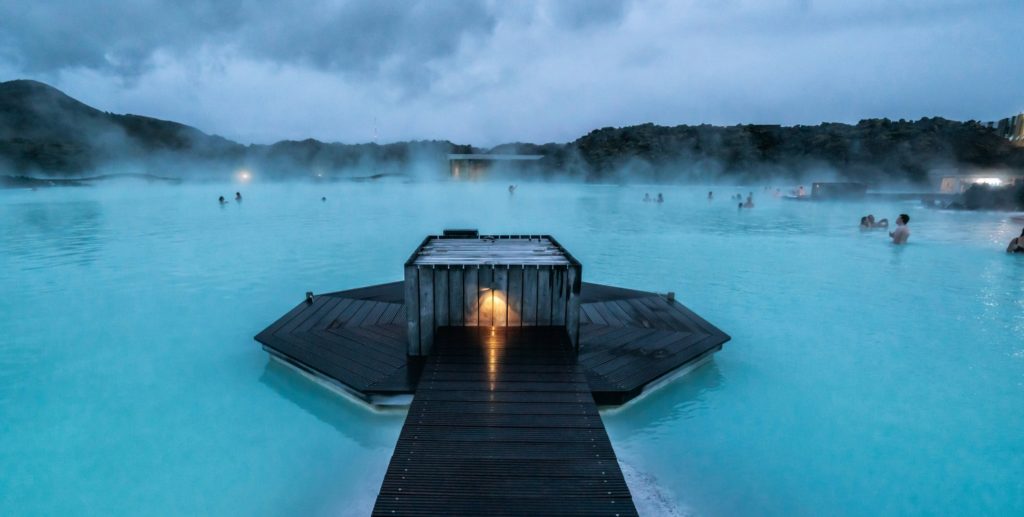
17. Drink tap water
A common question on any traveler’s lips… is drinking water safe!? Well, you’ll be hard-pressed to find many other places in the world where the water is as clean as Iceland. Unless explicitly marked otherwise, tap water is completely safe to drink across all of Iceland.
Icelandic water is totally free from calcium, nitrate, and chlorine. The tap water quality actually goes under strict monitoring and clearing of microorganisms and other pollutants. For environmental reasons (you’ll spot Iceland is a very clean & green country), do avoid buying bottled water and bring a reusable water bottle to refill.
Our top tip: If you are dispensing hot water from the tap, you may notice a faint sulfur smell as most hot water in Iceland is heated geothermally. To avoid this, try boiling the tap water for your morning brew.
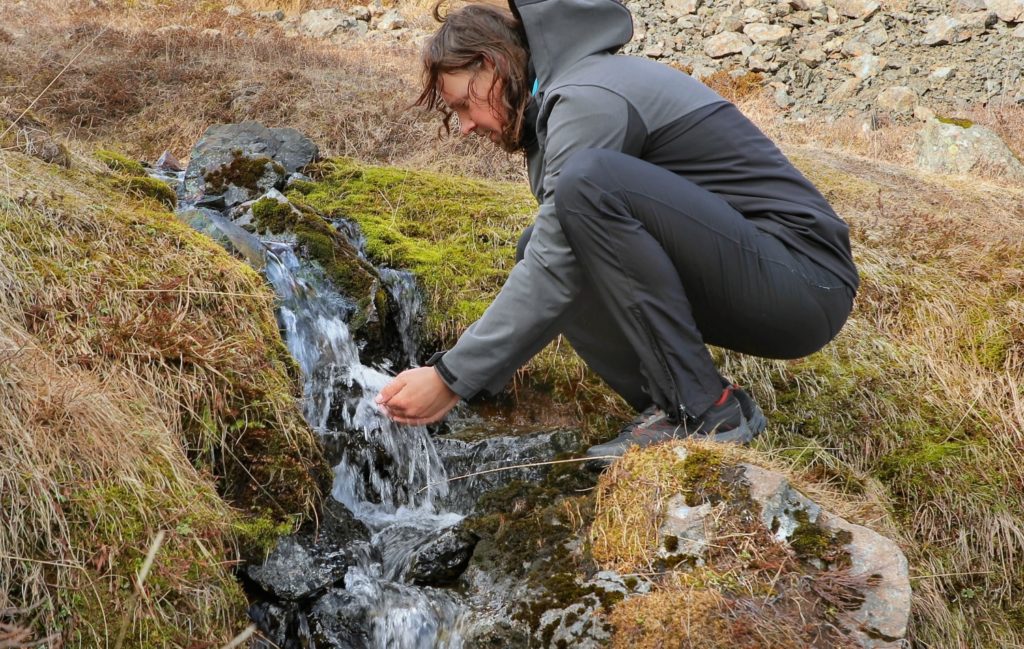
18. Pack European travel adaptors
EU folks, nothing for you to do here, you can bring along your favorite devices without worrying about a converter. For US and UK folks, you’ll need to stock up on European travel adaptors for all your electronic needs.
19. Manage your expectations with the Northern Lights
The Northern Lights – or Aurora Borealis – is a breathtaking natural phenomenon that illuminates the night skies of Iceland for over seven months of the year. This raw natural beauty appears on every bucket list from all over the world, so naturally, most visitors want to try and catch a glimpse at least on one occasion.
While Iceland is one of the best places in the world for witnessing this spectacular act of nature – drawing thousands of visitors every year – nature can be fickle, and seeing the Northern Lights during your visit can never be guaranteed. As with everything in Iceland, planning makes perfect. If you plan ahead, and time it right, you can maximize your chances of seeing the Aurora Borealis.
Read more:
>7 Top Tips to Maximize Your Chances of Seeing the Northern Lights in Iceland
FAQS
We’ve been in business since 1973, so we’ve seen some common and frequently asked questions that visitors surface before their trip to Iceland.
- How many days do you need in Iceland?
You’ll need at least 4 days to see the main landmarks along the South Coast, including Reykjavik. You’ll then need a further 10 days to visit everything along the ring road.
- What is the best month to visit Iceland?
The summer months bring more reliable weather and the (on average) warmer days. But that’s no guarantee you won’t face adverse weather conditions. Winter is also less crowded, so that’s worth weighing up.
Read more:
> The Best Time to Visit Iceland
- What is the best way to tour Iceland?
By Geysir rental car, of course! In all seriousness, cars are the best way to get around Iceland and give you the safety, control, and flexibility to explore on your own terms.
- Do people speak English in Iceland?
Yes! See points 15 and 16 for tips on language and getting to know the locals.
- Can you see all the best places in Iceland from Reykjavik?
Whilst Reykjavik is a must-see on any Iceland itinerary, it’s not possible to see all of Iceland just from a base in the capital. From Reykjavik, you’ll be able to see the Golden Circle and the South Coast but for anything further afield, you’ll need your Geysir rental! Consider a campervan option for longer road trips.
- Can I really use a credit card everywhere?
Yes, and it really is worth repeating. You can avoid the hassle of exchanging cash in the airport or carrying wads of cash in your trouser pockets. Everything in Iceland goes on a card, it is that simple.
Read more:
>Every FAQ for renting a vehicle with Geysir
Now it’s time to travel
Armed with these tips and the many other resources at Geysir, you should be all set for your 2023 Iceland trip. Remember, get in touch with our team to discuss your rental package and we’d be happy to help. We’re excited to see you in Iceland!
Start planning your next Iceland trip and explore this beautiful country at your own pace. At Geysir Car Rental Iceland, we have a rental car for all your road trip needs. Learn more about our cars here and book yours today.
Back